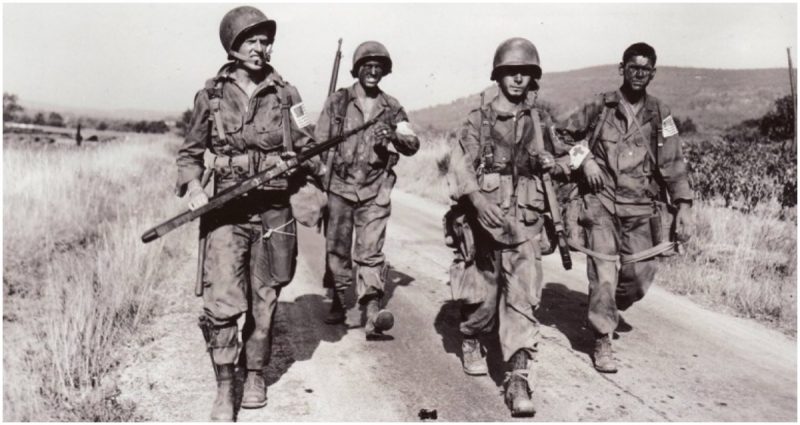The first regular troops that would go ashore were the battle-tested U.S. 3rd, 45th, and 36th Divisions supported by special forces units on their flanks.
The important invasion of southern France in World War II that liberated a huge portion of the country in only four weeks with comparatively light casualties almost didn’t happen because of politics and post-war worldview.
Operation Dragoon took place on August 15, 1944 just two months after the Allied invasion of Normandy. However, it was originally planned to coincide with Operation Overlord in Normandy in order to create a “hammer and anvil” campaign against the Axis forces in France.
The operation created quite a debate amongst the top military strategists and even the political leaders of the Allies. Soviet leader Joseph Stalin wanted a second front opened against Germany immediately. He was not pleased with the invasion of Italy and favored a more Western front in France and the Low Countries.
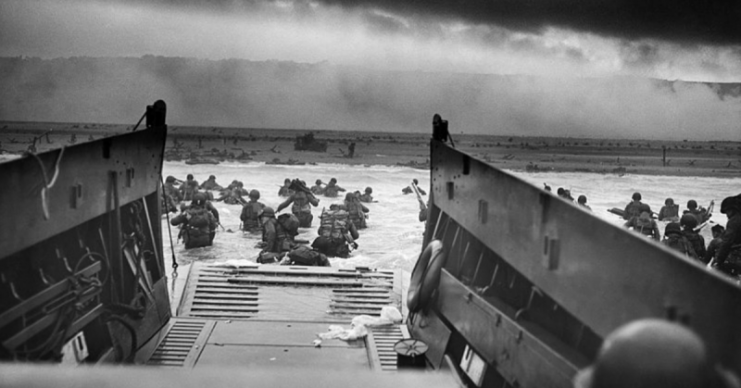
The U.S. planners including Generals Marshall and Eisenhower believed that France should be the priority because it was close to Allied bases in the Mediterranean and Great Britain itself, had large ports to land troops and supplies, and provided more favorable terrain than northern Italy and the Balkans.
British Prime Minister Winston Churchill, General Montgomery, and U.S. Army General Clark disagreed and believed that an invasion of the Balkans and a push towards Austria should be the priority in order to clear the Mediterranean and prevent the Soviets from gobbling up Eastern Europe.
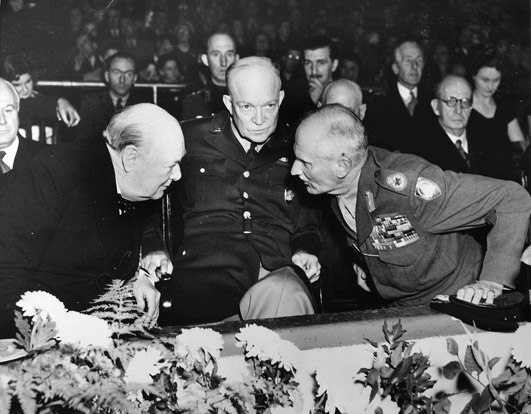
Ultimately, a small compromise was made that slightly favored the Eisenhower plan. Normandy would indeed be the site of the invasion of Western Europe by the Allies, but the “hammer” would not get an “anvil” in the south of France. Instead, a renewed effort was to be made to take Rome and advance through Italy using resources originally planned for the secondary landings in the French Riviera.
These forces would then be deployed for a later invasion of France and became known as Operation Dragoon. Churchill, who had adamantly opposed it, stated that he “was dragooned into the operation.”
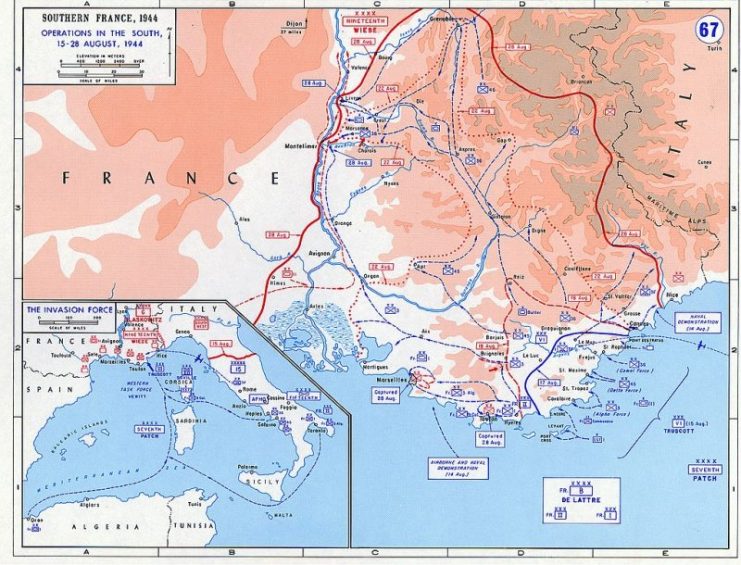
The Scenario at the Time of the Dragoon Landings
The Allies would launch Dragoon with a mammoth advantage over the Axis forces tasked with the defense of the southern French coast. In terms of men and materials, the German leadership surely felt they were facing impossible odds.
The Allied naval contingent consisted of over 800 Allied ships and nearly 1,400 landing craft. Five battleships (3 U.S., 1 British, and 1 French), nine escort carriers (7 British, 2 U.S.), and three heavy cruisers headlined the offshore support.
The combined air forces allocated to the operation included over 1,300 heavy bombers and almost four thousand aircraft in total giving the Allies complete air superiority over the defenders who could field no more than 200 planes.
The first regular troops that would go ashore were the battle-tested U.S. 3rd, 45th, and 36th Divisions supported by special forces units on their flanks and over 5,000 British and American paratroopers landing in the rear of the German defenses.
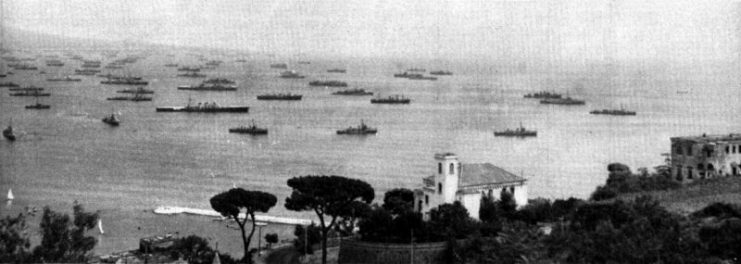
French Resistance fighters throughout the target area as well as French Armee B that would land after the first U.S. divisions would support these troops.
General Blaskowitz of Army Group G and General Wiese in command of the German 19th Army had between 250,000 and 300,000 men in the south of France, virtually no air force, no capital ships and only one Panzer Division at about half its strength with under 100 tanks, mostly Panzer IV and V’s.
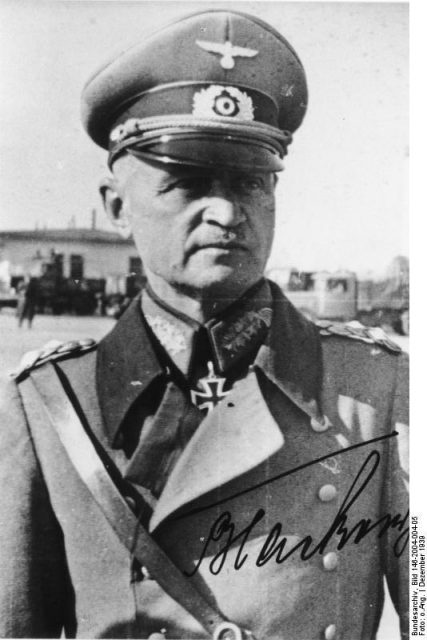
Furthermore, many of the static infantry defending the coastline were suspect at best as they were Soviet and Polish conscript “volunteers” collected from POW camps on the Eastern Front. They were unlikely to perform well against a determined invader.
The French coast did have significant fortifications including thousands of bunkers, beach obstacles, mined beach and port approaches, and several hundred artillery batteries including over 100 large coastal guns.
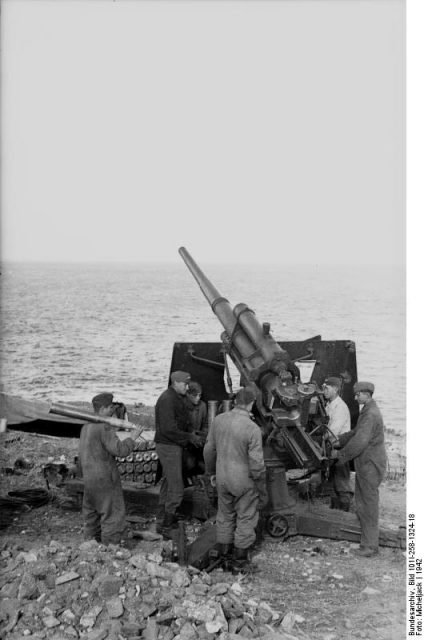
Planning the Operation
With air superiority, the Allies were able to utilize aerial reconnaissance at will. Their intelligence gathering was aided by the French resistance, which provided detailed troop strengths, schedules, and maps of fortifications.
Additionally, the Allies used photographs from U.S. tourists of the French Riviera taken before the U.S. entered the war.
The landings would take place between Toulon and Cannes along a roughly 40-mile stretch of beaches. There would be three division-sized infantry landings supported by commando landings on their flanks including the Black Devil Brigade made up of Americans and Canadians.
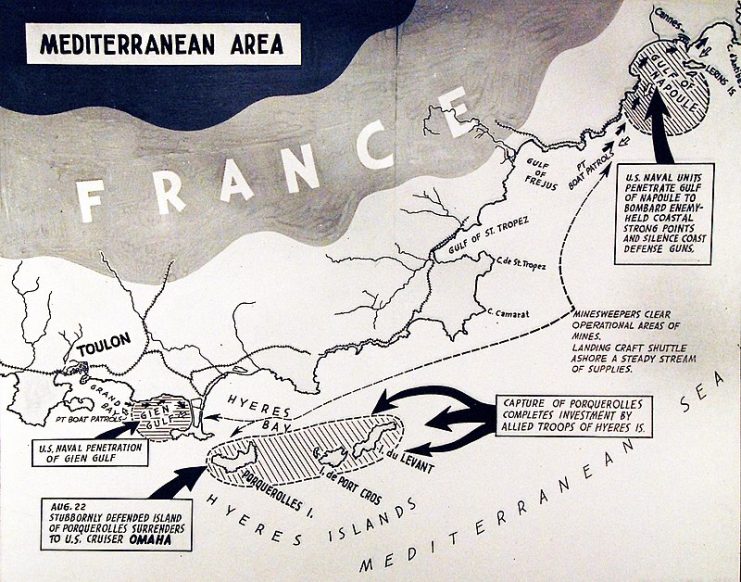
Over five thousand airborne troops would land several miles inland and take the town of Le Muy and Draguignan while sowing confusion in the German ranks to slow or eliminate German counterattacks.
The key targets of the operation were to secure the ports of Marseilles and Toulon within a month and to isolate and destroy the German 19th Army.
Setting the Table for the Main Invasion
Beginning on August 14, the Allies engaged in several preliminary attacks and some subterfuge, but also carried out heavy bombing of the landing areas, roads, railways, and infrastructure.
Additionally, two diversionary naval bombardments took place east and west of the landing zones that successfully tied down troops in those areas and kept them from responding quickly to the actual landings.
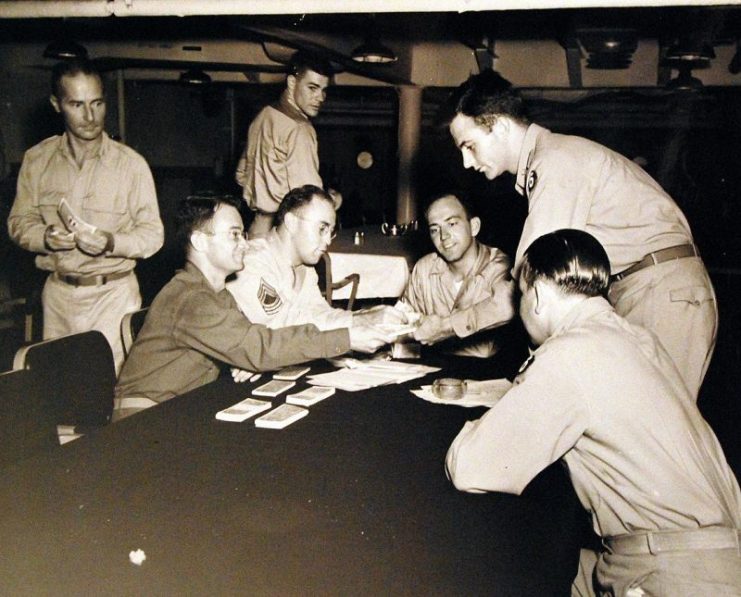
The commando raids, code named Sitka and Romeo, were successful in taking the Hyeres Islands and the approach roads to landing sites from Toulon. The 1st Special Service Force known as the Black Devil Brigade engaged the German garrison on the islands until their surrender on the 16th, while French commandos in Romeo destroyed German batteries on the coast.
Meanwhile, life-size dummy paratroopers were dropped behind the German coastal units, with noise-making devices and explosives that successfully confused and frustrated the German units. This distracted them from the real British and American paratroopers.
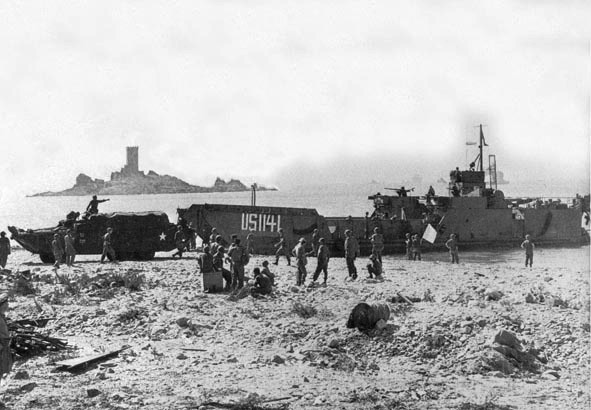
Landing and Breaking Out
Unlike the Normandy invasion, the U.S. divisions landing in Dragoon faced little opposition initially largely due to the successful preliminary operations and the demoralization of the static Axis units tasked with opposing them.
The landings and breakout occurred with a good amount of efficiency and without many setbacks. The troops on the beaches were able to link up with paratroopers and advance in nearly every sector with the exception of the town of Saint-Raphael, which put up stubborn resistance.
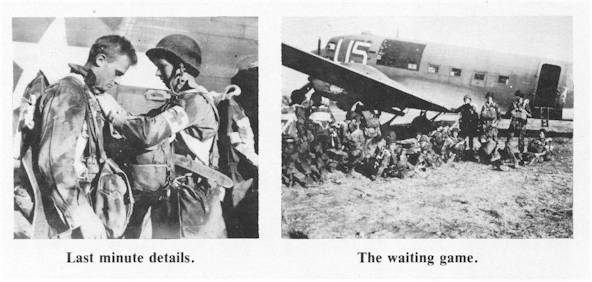
Within 24 hours of the initial wave the entire beachhead was secured and total casualties of the amphibious assault were less than 500 with 95 KIAs. The airborne element suffered just over 100 KIAs and roughly 25% of those were in parachute or glider accidents.
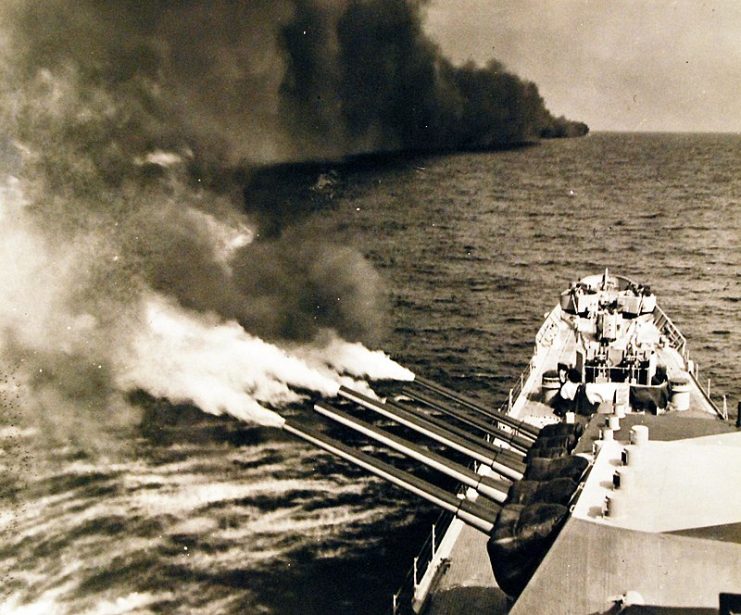
The Axis forces attempted some limited counterattacks, but the early assembly of combined infantry, armor, and artillery units that landed with well-planned efficiency quickly overwhelmed them.
Takeaways From Operation Dragoon
The majority of southern France was liberated in only four weeks of fighting. Toulon and Marseilles fell to French forces, opening their ports before the end of August.
This allowed for vast numbers of American troops to be brought to the European continent from the U.S. mainland and enter the fight against Germany, which the Normandy invasion had failed to do.
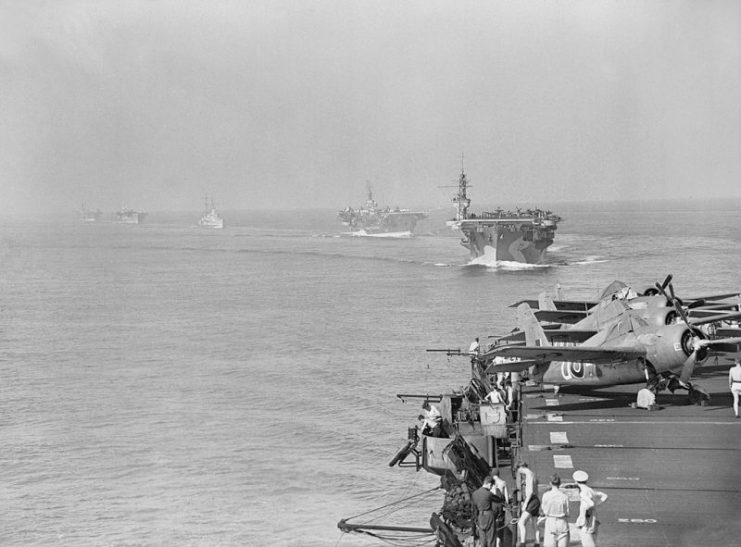
Millions of tons of equipment and over 900,000 soldiers would pass through the two harbors in the coming months before working their way towards the remnants of the German Army.
Of the 300,000 Axis soldiers in German Army Group G, over half were taken out of the fight with over 7,000 killed, 20,000 wounded, and 130,000 captured. Furthermore, over 1,000 German artillery pieces would be destroyed or captured.
One failure of the operation was not isolating the best German forces and eliminating them. Despite their failings, the German generals Blaskowitz and Wiese were able to organize a retreat in good order with their best units at the German border.
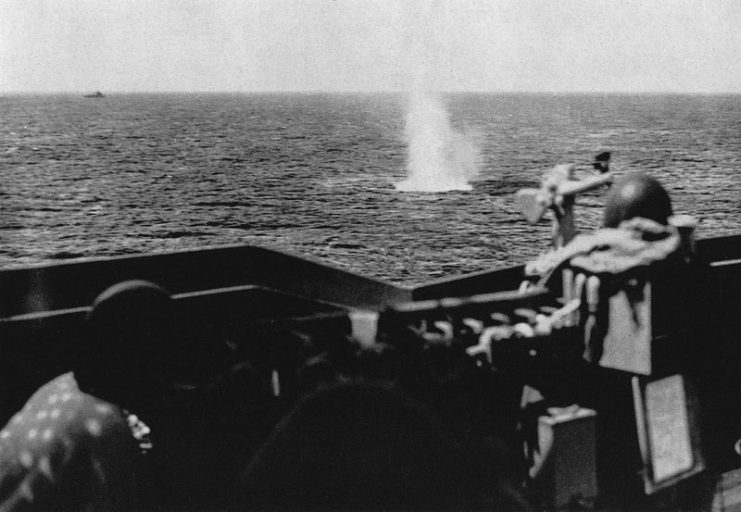
One reason for this success on the Germans’ part was the Allies’ limited fuel and supplies at the beginning of the operation. It had not been considered that the landings would proceed so quickly as to burn through their fuel reserves before cutting off a German retreat.
Another reason was that the German leadership had created a withdrawal contingency in advance due to the success of Operation Overlord in the north. Continued fighting in France was considered untenable by July of 1944 in advance of Dragoon.
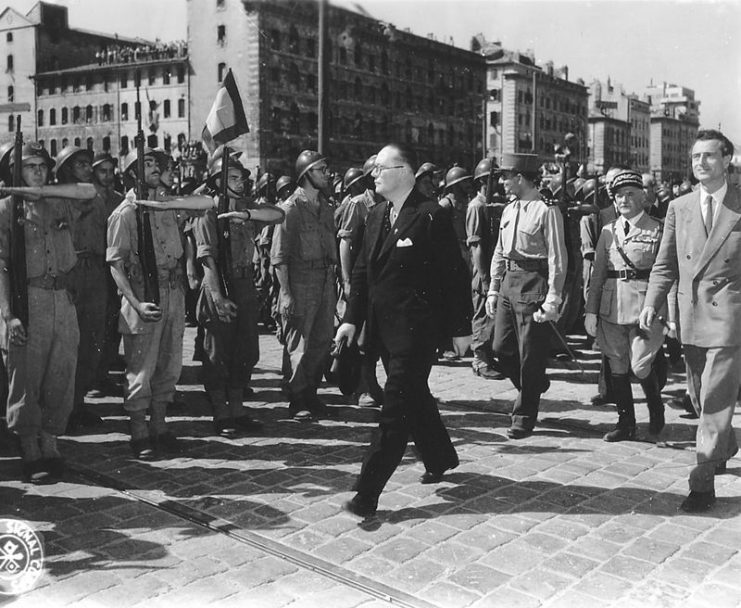
Critics of Operation Dragoon continued to point out later that the amount of resources dedicated to the invasion could have been used to prevent the Soviets from gaining so much ground in Eastern Europe and the Balkans.
Read another story from us: The German Units Tasked To Throw The Normandy Invasion Back Into The Sea
They contended, and some continue to say, that the Cold War would have been painted much differently if the Allies had instead invaded Trieste. However, the distance from Gibraltar to Trieste is more than 1,000 miles greater and would have been much harder to support.
In the end, Eisenhower and Marshall were more than pleased with the operation and Marshall was quoted as saying that Operation Dragoon was “one of the most successful things we did.”
